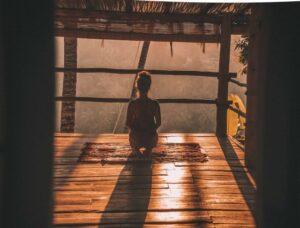Welcome to the ultimate guide to trekking in the Himalayas! Get ready for an unforgettable adventure amidst snow-capped peaks, lush valleys, and ancient cultures. This guide is your go-to resource for choosing the right trek, packing smart, acclimatizing effectively, and capturing picture-perfect moments while ensuring your safety.
Whether you’re a seasoned trekker or a beginner, we’ve got you covered with insider insights and iconic treks like Everest Base Camp and Annapurna Circuit. So, fasten your hiking boots, and let’s embark on a life-altering journey through the breathtaking world of the Himalayas!
The Himalayas: a Place for Great Adventures
The Himalayas: your gateway to great adventures! This majestic mountain range offers a surreal blend of natural beauty and spiritual serenity, attracting trekkers from around the globe. From tracing ancient trade routes to discovering hidden monasteries and interacting with warm-hearted locals, the Himalayas promise a life-altering experience that will challenge your limits and expand your horizons. If you’re seeking thrilling escapades and breathtaking landscapes, look no further than the Himalayas for your next unforgettable adventure.
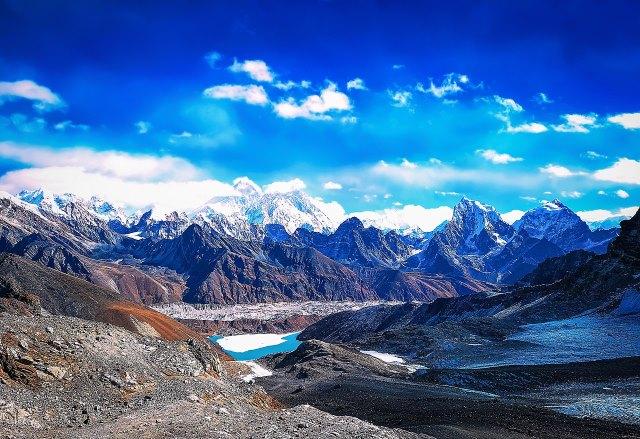
Planning your Trek in the Himalayas
Researching trekking routes
Planning your trek in the Himalayas is the first step towards an incredible adventure. Researching trekking routes is essential to find the one that suits your fitness level and interests. The Himalayas offer a wide array of trails, each with its own unique charm and challenges. For instance, if you’re a beginner seeking a relatively easier trek, the Langtang Valley trek in Nepal could be an excellent choice. It takes you through picturesque landscapes, and quaint villages, and offers stunning views of snow-capped peaks.
On the other hand, if you’re an experienced trekker looking for a more challenging expedition, the Markha Valley trek in Ladakh, India, might be just what you need. This trek involves crossing high mountain passes, and remote villages, and encountering nomadic tribes, providing an authentic and adventurous experience.

When researching trekking routes, consider factors like the duration of the trek, the level of difficulty, the best time to go, and the permits required. Some treks, like the Annapurna Circuit, may take several weeks to complete, while others, like the Poon Hill trek, can be done in just a few days. Understanding the demands of each trek will help you prepare better and ensure a more enjoyable experience.
Additionally, reading about other trekkers’ experiences and recommendations can provide valuable insights. Online forums, travel blogs, and guidebooks are great resources to gather first-hand information. Take note of any safety precautions, essential gear, and insider tips shared by those who have already trekked in the region.
Remember, researching trekking routes is not just about finding the best path; it’s also about immersing yourself in the excitement and anticipation of the journey ahead. So, dive into the world of Himalayan trekking, and let your research be the foundation of an unforgettable adventure!
Choosing the right season
Choosing the right season for your Himalayan trek is crucial.

Spring (March to May) brings blooming rhododendrons and vibrant landscapes.
Summer (June to August) offers lush greenery but may have occasional monsoon rains.
Autumn (September to November) is the most popular season with stable weather and clear mountain views.
Winter (December to February) is challenging due to snow and cold temperatures but offers a unique and tranquil experience. Consider your preferences and the trek’s difficulty when deciding the best season for your adventure.
Obtaining necessary permits
Obtaining the necessary permits is an important step before embarking on your Himalayan trek. Different regions and treks may require specific permits from local authorities or conservation offices. For instance, treks in Nepal, like Everest Base Camp or Annapurna Circuit, typically require the TIMS (Trekkers’ Information Management System) and ACAP (Annapurna Conservation Area Permit) respectively.
Similarly, treks in India, such as the Roopkund Trek in Uttarakhand, may require permits from the forest department or local administration. Make sure to research the permit requirements well in advance and allocate sufficient time for the application process.
Having the necessary permits ensures a smooth and hassle-free journey, and it also helps support conservation efforts in the region. So, be proactive in obtaining the required permits and ensure a responsible and enjoyable trekking experience in the Himalayas.
Physical Fitness and Training
Importance of physical fitness
Physical fitness and training play a crucial role in ensuring a successful Himalayan trek. These treks involve challenging terrains, high altitudes, and long hours of walking. Being physically fit not only enhances your trekking experience but also reduces the risk of altitude sickness and other health issues.
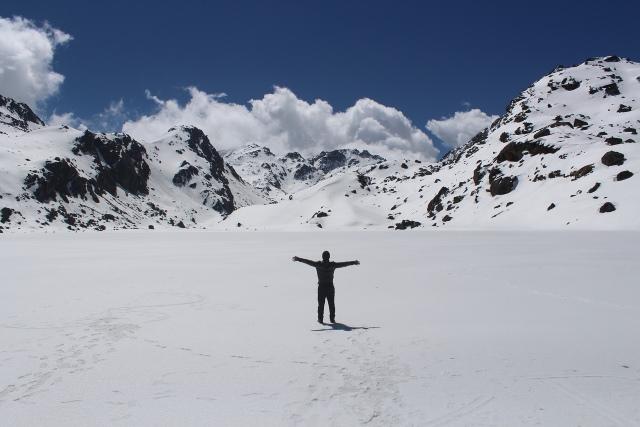
Suggested training activities
Regular cardiovascular exercises like hiking, running, or cycling can help improve your endurance. Strength training exercises, focusing on core, leg, and upper body muscles, will prepare you for carrying a backpack and navigating steep trails.
Additionally, practice hiking with a loaded backpack to get accustomed to the weight you’ll be carrying during the trek. Gradually increase the distance and elevation of your practice hikes to build stamina and confidence.
Remember that the Himalayas demand a lot from your body, so being in good physical shape will allow you to fully enjoy the breathtaking landscapes and cultural experiences that await you.
Altitude acclimatization techniques
Altitude acclimatization techniques are crucial for a safe and enjoyable Himalayan trek. As you ascend to higher altitudes, the air becomes thinner, and your body needs time to adjust. Here are some techniques to help you acclimatize effectively:
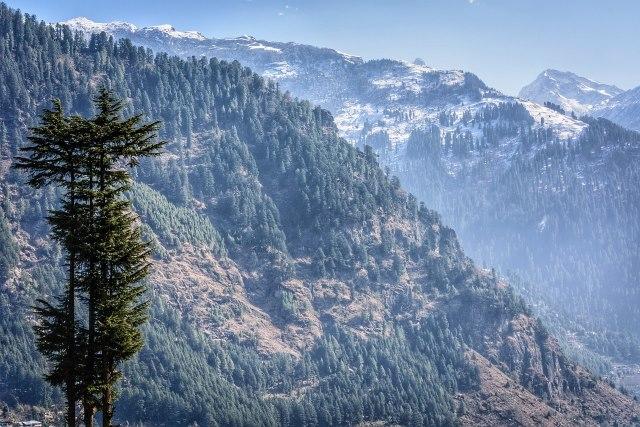
- Gradual ascent: Avoid rapid gains in elevation and allow your body time to adapt to the changing altitude. Plan your trek with ample acclimatization days at intermediate altitudes.
- Hydration: Stay well-hydrated throughout your trek. Drinking plenty of water helps your body cope with altitude and reduces the risk of altitude sickness.
- Rest: Listen to your body and take sufficient rest breaks during your trek. Adequate rest allows your body to recover and adjust to the changing conditions.
- Climb high, sleep low: Whenever possible, follow the “climb high, sleep low” principle. Ascend to a higher altitude during the day and then descend to sleep at a lower altitude, which aids acclimatization.
- Avoid alcohol and smoking: Alcohol and smoking can exacerbate the effects of altitude, so it’s best to avoid them during your trek.
- Medication: Consult your doctor about altitude sickness medication and carry them with you as a precaution.
Remember, altitude acclimatization is a gradual process, and everyone adapts differently. Pay attention to your body, communicate any discomfort with your trek leader, and prioritize safety above all else. With proper acclimatization, you can fully enjoy the breathtaking beauty of the Himalayas without compromising your well-being.
Essential Gear and Equipment
Clothing and layering system
Essential gear and equipment are vital for a successful Himalayan trek, and proper clothing with a layering system is key to staying comfortable and safe in changing weather conditions.
- Base Layer: Start with a moisture-wicking base layer that keeps sweat away from your skin, ensuring you stay dry and warm. Synthetic or merino wool materials work well for this layer.
- Insulating Layer: Add an insulating layer to trap body heat. Fleece jackets or down-filled garments are excellent choices to provide warmth without adding much weight.
- Shell Layer: The outer shell should be windproof, waterproof, and breathable to protect you from rain, snow, and wind. Look for a good quality waterproof jacket and pants to keep you dry during unexpected weather changes.
- Trekking Pants: Choose comfortable and quick-drying trekking pants. Convertible pants that can be turned into shorts are great for versatile use.
- Headwear: A warm beanie or hat and a sun hat or cap are essential to protect you from both cold and sun.
- Gloves: Invest in insulated and waterproof gloves to keep your hands warm and dry during chilly conditions.
- Footwear: Opt for sturdy and comfortable hiking boots with ankle support. Make sure to break them in before your trek to avoid blisters.
- Socks: Bring moisture-wicking and cushioned hiking socks to keep your feet dry and prevent blisters.
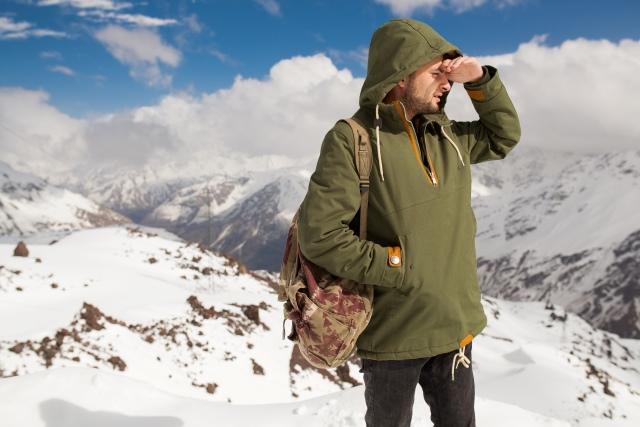
The weather in the Himalayas can be unpredictable, so dressing in layers allows you to adjust to varying temperatures and conditions. Being well-prepared with proper clothing and gear ensures a comfortable and enjoyable trekking experience in this mesmerizing mountain region.
Trekking boots and accessories
Trekking boots are a vital part of your Himalayan adventure, providing the necessary comfort and protection for your feet during the challenging journey. Invest in high-quality, waterproof boots with sturdy soles and ankle support to navigate uneven terrain and rocky paths safely. Properly fitting boots will reduce the risk of blisters and foot discomfort, ensuring you can fully enjoy the breathtaking landscapes of the Himalayas without any hindrance. Before your trek, make sure to break in your boots to avoid discomfort during the expedition.

Camping equipment and sleeping bags
Camping equipment and sleeping bags are essential for a comfortable and restful stay during your Himalayan trek. Choose lightweight, high-quality camping gear to keep your load manageable while ensuring durability. A sturdy tent will protect you from the elements and provide a cozy shelter after a day of trekking.
When it comes to sleeping bags, consider the temperature rating suitable for the season and altitude of your trek. A well-insulated sleeping bag will keep you warm during cold nights at higher elevations, while a compact and lightweight design will make it easy to carry along the trail.
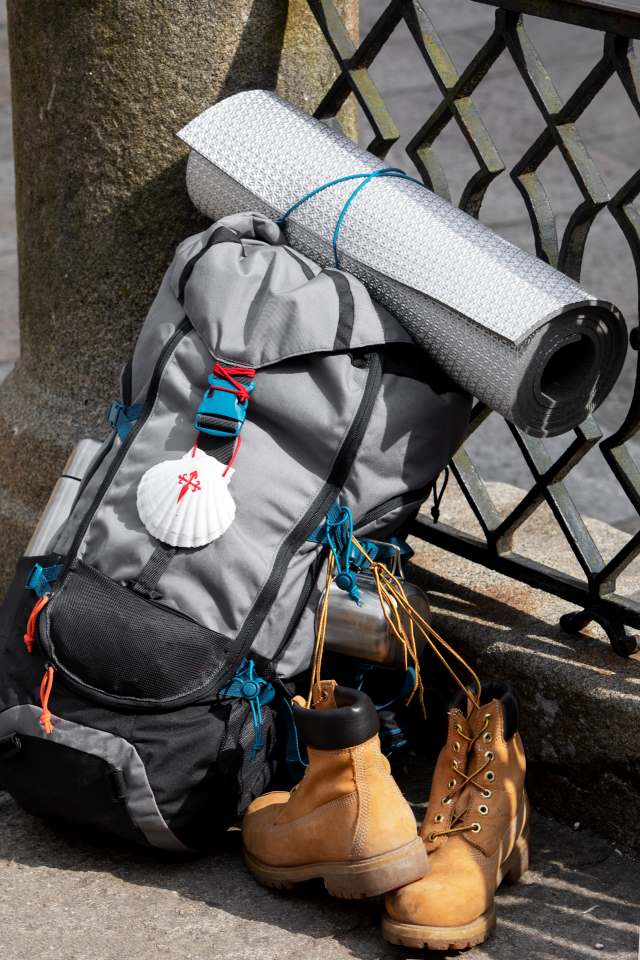
Investing in reliable camping equipment and a cozy sleeping bag will contribute to a refreshing and rejuvenating rest each night, ensuring you wake up energized and ready to conquer the Himalayan trails day after day.
Hiring a Guide or Going Solo
Benefits of hiring a local guide
Hiring a local guide for your Himalayan trek offers numerous benefits that enhance your overall experience. Local guides possess in-depth knowledge of the region, its culture, and the best trekking routes. They can share fascinating insights and stories about the mountains, making your journey more meaningful and engaging.
With a local guide, you can navigate the trails with confidence, ensuring you don’t get lost or face any unnecessary risks. They are familiar with the terrain, weather patterns, and potential challenges, making your trek safer and more enjoyable.

Interacting with local communities and understanding their way of life becomes much easier with a guide by your side. They can help bridge the language and cultural barriers, allowing you to have authentic interactions and gain a deeper appreciation for the Himalayan culture.
Moreover, hiring a local guide supports the local economy and communities. It is a way of giving back to the region and contributing positively to the livelihoods of those who call the Himalayas their home.
In conclusion, having a local guide enriches your trekking experience, ensuring you make the most of your adventure by gaining insights, staying safe, and fostering meaningful connections with the people and the land.
Trekking independently: pros and cons
Trekking independently in the Himalayas has its own set of advantages and challenges. Let’s explore the pros and cons to help you decide which option suits you best.
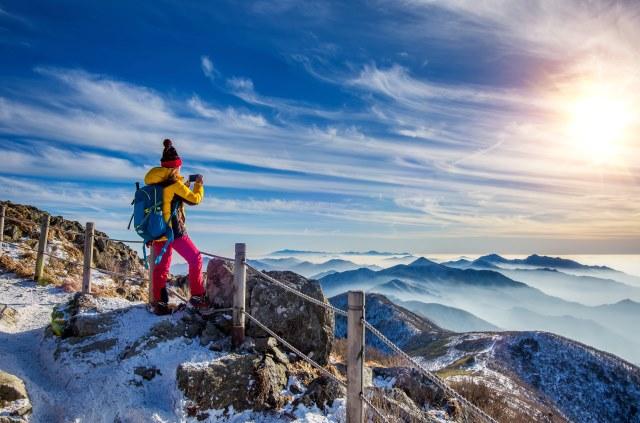
Pros of trekking independently:
- Flexibility: Traveling on your own schedule allows you to adjust your itinerary and pace as you wish, giving you more freedom to explore and immerse yourself in the surroundings.
- Cost-effectiveness: Trekking independently can be more budget-friendly as you have control over your expenses and can opt for more economical choices.
- Personal Growth: Trekking independently can be a transformative experience, allowing you to push your boundaries, build self-reliance, and gain valuable life skills.
- Authentic Experience: You have the opportunity to interact directly with locals, experience their culture, and forge genuine connections without a mediator.
- Solitude and Serenity: Enjoy the peace and tranquility of the mountains on your terms, away from the hustle and bustle of organized groups.
Cons of trekking independently:
- Navigation Challenges: Trekking independently demands excellent navigation skills, and getting lost in unfamiliar terrain can be risky and time-consuming.
- Safety Concerns: Without a guide’s expertise, you may be less prepared for sudden weather changes, altitude sickness, or emergency situations.
- Language Barriers: Communicating with locals can be challenging if you don’t speak the local language or dialects.
- Logistics: Organizing permits, transportation, and accommodation can be time-consuming and require extra effort.
- Limited Support: Unlike guided treks, you won’t have immediate support in case of injuries or emergencies.
Ultimately, the decision to trek independently depends on your level of experience, comfort with uncertainty, and desire for adventure. If you are an experienced and self-reliant trekker seeking freedom and solitude, independent trekking might be the perfect choice for you. However, if safety and convenience are top priorities, opting for a guided trek might provide a more comfortable and secure experience.
Accommodation and Food
Teahouse trekking options
Teahouse trekking in the Himalayas offers convenience, community interaction, and local cuisine. You can connect with fellow trekkers and enjoy a cost-effective experience. However, privacy and amenities may be limited, and availability can be a concern during peak seasons. Consider teahouse trekking for an authentic and social adventure, but be prepared for basic facilities and plan ahead for accommodation.
Camping and cooking arrangements
Camping during your Himalayan trek offers a close connection to nature and a chance to experience the mountains intimately. Setting up your own tent amidst stunning landscapes provides a sense of solitude and adventure. Additionally, cooking arrangements involve using portable stoves or open fires to prepare your meals. This self-sufficiency allows you to enjoy simple, nourishing meals while enjoying the serenity of the outdoors.
However, keep in mind that camping requires carrying extra gear, and proper waste disposal is essential to preserve the pristine environment. Embrace the unique experience of camping in the Himalayas, but be mindful of your impact on the surroundings and adhere to responsible camping practices.
Local Cuisine and dietary considerations
Exploring the local cuisine during your Himalayan trek adds a delightful dimension to your journey. You’ll have the opportunity to taste authentic dishes that reflect the region’s culture and flavors. Local teahouses and lodges offer traditional meals, ranging from hearty soups to momos (dumplings) and dal bhat (rice with lentil soup). Embrace the chance to savor these culinary delights, and your taste buds will thank you!
However, while indulging in local cuisine, be mindful of dietary considerations. Some trekkers might need to accommodate special dietary requirements, such as vegetarian, vegan, or gluten-free options. It’s essential to communicate your dietary needs to teahouse owners or trekking agencies beforehand. Packing some snacks and energy bars can also be helpful to supplement your meals during the trek.
Embrace the flavors of the Himalayas, but prioritize your health and enjoyment by being attentive to your dietary needs throughout the journey.
Safety and Health Precautions
Altitude sickness prevention and treatment
Ensuring safety and health during your Himalayan trek is of utmost importance, especially when it comes to preventing and treating altitude sickness. Here are some essential precautions:
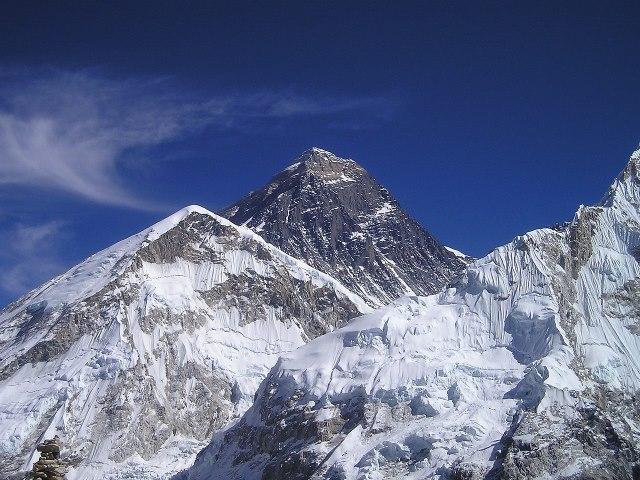
- Gradual Ascent: Ascend gradually to higher altitudes, allowing your body to acclimatize properly. Avoid rapid gains in elevation to reduce the risk of altitude sickness.
- Hydration: Stay well-hydrated throughout the trek. Drink plenty of water and avoid alcohol and caffeine, which can contribute to dehydration.
- Recognize Symptoms: Be aware of symptoms of altitude sickness, such as headaches, dizziness, nausea, and shortness of breath. If you experience any signs of discomfort, inform your trekking companions and guide immediately.
- Acclimatization Days: Plan acclimatization days in your itinerary, giving your body time to adjust to the altitude. Use these days to explore nearby areas without significant elevation gain.
- Medication: Consult a healthcare professional before your trek and consider carrying medication for altitude sickness prevention, such as acetazolamide (Diamox). However, remember that medication is not a substitute for proper acclimatization.
- Descend if Necessary: If symptoms of altitude sickness worsen despite precautions, descend to a lower elevation immediately. Descending is the most effective treatment for severe altitude sickness.
Prioritizing your safety and health by following these altitude sickness prevention measures will allow you to enjoy the stunning Himalayan landscapes without compromising your well-being. Always communicate with your trekking guide about any health concerns, and trek responsibly to make the most of your adventure!
Water purification methods
Water purification is vital during your Himalayan trek to ensure safe drinking water and avoid waterborne illnesses. Here are some effective methods:
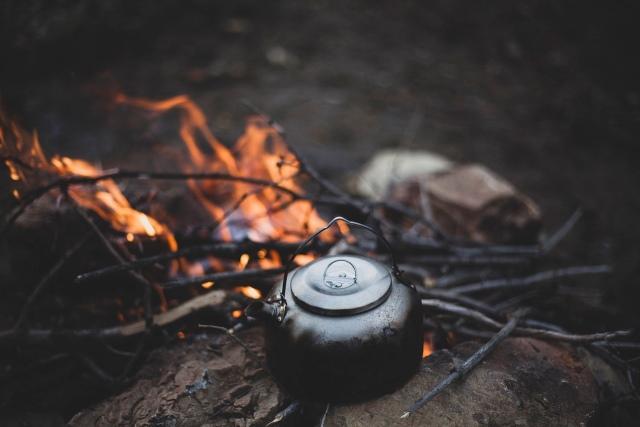
- Boiling: Boiling water is the most reliable and straightforward method to purify it. Bring the water to a rolling boil for at least one minute to kill harmful microorganisms.
- Water Purification Tablets: Water purification tablets, like chlorine or iodine tablets, are lightweight and easy to carry. Follow the instructions on the package to treat the water effectively.
- Filtration Systems: Portable water filters or purifiers can remove bacteria, protozoa, and other contaminants from water sources. Opt for a reliable and compact filter suitable for your trek.
- UV Water Purifiers: UV light can effectively kill waterborne pathogens. UV water purifiers are compact and easy to use; simply immerse the device in the water and stir for the recommended time.
- Water Sterilization Pens: Water sterilization pens use UV light to treat water in individual bottles. These pens are small and battery-operated, making them convenient for personal use.
- Water Bladders with Filters: Some hydration bladders come with built-in filters, allowing you to drink water directly from the bladder without worrying about purification.
Ensure that you use water purification methods consistently, especially when filling up from natural water sources, to protect yourself from waterborne diseases. Prioritize your health and safety by having a reliable water purification system as a crucial part of your trekking gear.
First aid and emergency response
Carrying a well-equipped first aid kit and having knowledge of emergency response protocols are essential for your Himalayan trek. Here’s what you need to know:
- First Aid Kit: Pack a comprehensive first aid kit with essentials like bandages, antiseptic ointment, pain relievers, blister pads, and medical tape. Include any personal medications you may need.
- Basic First Aid Training: Familiarize yourself with basic first aid techniques, such as wound cleaning and dressing, CPR, and how to handle sprains or fractures.
- Emergency Contacts: Carry a list of emergency contacts, including local emergency services and contacts of your trekking agency or guide.
- Communication Devices: Bring a fully charged mobile phone and a portable charger for emergency communication. Some remote areas may have limited connectivity, so it’s essential to have a satellite phone or communication device if needed.
- Acquire Local Knowledge: Familiarize yourself with the nearest medical facilities and evacuation procedures in the region you’re trekking.
- Trekking Guide’s Expertise: If you’re trekking with a guide, ensure they are trained in first aid and have experience in handling emergencies.
Remember that prevention is the best approach to emergencies. Stay hydrated, dress appropriately for changing weather, and trek within your physical capabilities. In case of an emergency, stay calm, seek help immediately, and use your first aid skills until professional help arrives. Being prepared and informed about first aid and emergency response will provide peace of mind and enhance your safety during the trek.
Popular Trekking Routes in the Himalayas
Everest Base Camp Trek
Among the popular trekking routes in the Himalayas, the Everest Base Camp Trek stands out as an iconic adventure. This trek takes you through stunning landscapes, Sherpa villages, and Buddhist monasteries, culminating at the base of the world’s highest peak, Mount Everest. The journey offers breathtaking views of Everest, Lhotse, and Nuptse, making it a dream come true for trekking enthusiasts and nature lovers.
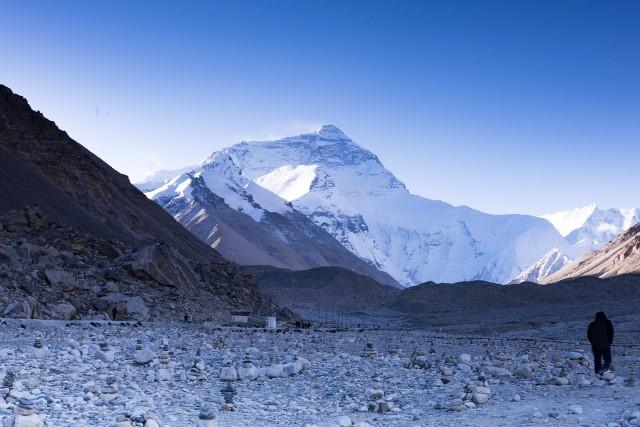
The trail’s highlights include Namche Bazaar, the vibrant Sherpa capital, and the Everest Base Camp itself, where climbers prepare for their ascent. This trek is a once-in-a-lifetime experience that showcases the grandeur of the Himalayas and the indomitable spirit of mountaineers.
Annapurna Circuit Trek
The Annapurna Circuit Trek is another renowned trekking route in the Himalayas, renowned for its diverse landscapes and cultural experiences. This trek takes you through lush forests, terraced fields, and charming villages, allowing you to witness the rich traditions of different ethnic groups, including Gurungs and Thakalis.
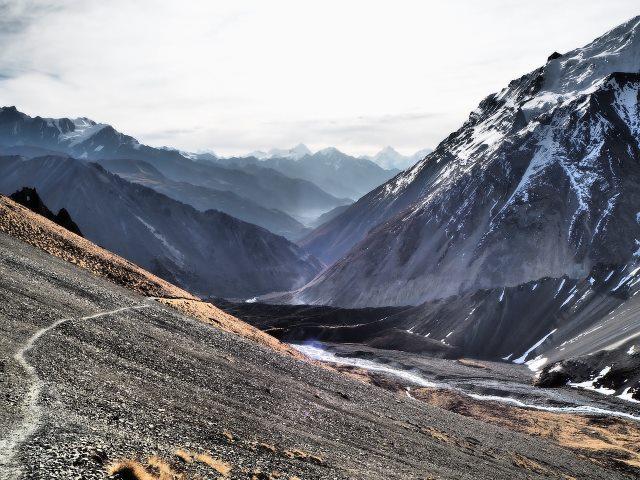
The highlight of the Annapurna Circuit is the Thorong La Pass, standing at an impressive 5,416 meters, providing breathtaking panoramic views of the Annapurna and Dhaulagiri mountain ranges. The trek also takes you to the sacred Muktinath Temple, a significant pilgrimage site for both Hindus and Buddhists. With its varied terrain and cultural immersion, the Annapurna Circuit Trek is a captivating journey that showcases the natural and cultural wonders of Nepal’s Himalayas.
Langtang Valley Trek
The Langtang Valley Trek is a captivating Himalayan adventure, offering a unique blend of natural beauty and cultural charm. This trek takes you through picturesque rhododendron forests, serene valleys, and traditional Tamang villages. The Langtang region is renowned for its warm hospitality and unique culture, giving you a glimpse into the lives of the local Tamang and Sherpa communities.
The trek offers breathtaking views of snow-capped peaks like Langtang Lirung and Ganesh Himal, as well as opportunities to spot wildlife like the elusive red panda. One of the highlights of the Langtang Valley Trek is Kyanjin Gompa, a revered Buddhist monastery, where you can experience the spiritual essence of the Himalayas.
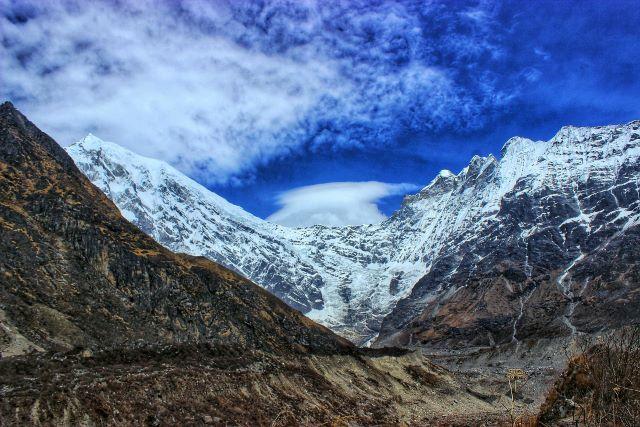
For those seeking a shorter trek without compromising on natural beauty and cultural experiences, the Langtang Valley Trek is a perfect choice. Immerse yourself in the tranquil beauty of the Langtang region and create unforgettable memories amidst the grandeur of the Himalayas.
Gokyo Lakes Trek
The Gokyo Lakes Trek is a mesmerizing journey in the Himalayas, offering a unique and lesser-trodden route compared to the Everest Base Camp Trek. This trek takes you through the stunning Gokyo Valley, passing by emerald green lakes, glacial rivers, and picturesque landscapes.
The highlight of the Gokyo Lakes Trek is the series of pristine glacial lakes nestled amidst the snow-capped peaks of Cho Oyu and Everest. Gokyo Ri, a vantage point at 5,357 meters, offers breathtaking panoramic views of some of the world’s highest mountains.
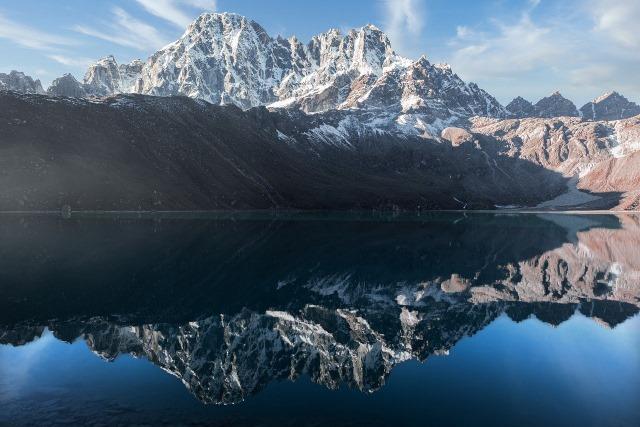
The trek also provides an opportunity to explore Sherpa villages and interact with the warm-hearted locals, gaining insights into their traditional way of life. For those seeking a quieter and less crowded trekking experience, the Gokyo Lakes Trek is a fantastic alternative, providing a perfect blend of natural beauty and cultural encounters in the heart of the Everest region.
Challenges and Rewards of Trekking in the Himalayas
Physical and mental challenges
Trekking in the Himalayas presents both physical and mental challenges that can test your limits and resilience. The steep ascents and high altitudes demand excellent physical fitness and endurance. Trekking at higher elevations requires acclimatization to prevent altitude sickness, which can be mentally daunting. The unpredictable weather and challenging terrains add to the adventure, pushing you to adapt and stay focused.
Despite the challenges, trekking in the Himalayas offers incredible rewards and a profound sense of fulfillment. Witnessing the majestic landscapes, standing amidst snow-capped peaks, and experiencing the unique mountain culture are awe-inspiring moments that stay with you forever.

The sense of achievement upon completing a trek and overcoming obstacles leaves you with a deep sense of satisfaction and confidence. The camaraderie formed with fellow trekkers and the connections made with locals enriches the journey, making it a truly unforgettable and life-changing experience.
Connecting with nature
Connecting with nature is a profound and enriching aspect of trekking in the Himalayas. The serene landscapes, pristine lakes, and breathtaking vistas offer a sense of tranquility and peace. Amidst the grandeur of the mountains, you feel a profound connection to the natural world and a deep appreciation for its beauty and wonders. The sights and sounds of the wilderness awaken your senses, making you more present and mindful of the moment.
Interacting with nature also fosters a sense of humility and insignificance, realizing the vastness of the universe and our place within it. The simplicity of life in the mountains, away from the distractions of modern life, allows you to reconnect with your inner self and find solace in the beauty of simplicity.
Beyond the physical beauty, connecting with nature in the Himalayas brings a spiritual and transformative experience. It can be a time for self-reflection, introspection, and personal growth. The mountains have a way of teaching valuable life lessons about resilience, adaptability, and appreciating the journey rather than just the destination.
Overall, the opportunity to connect with nature in the Himalayas is a gift that leaves a lasting imprint on your soul. The experience deepens your love for the natural world and inspires a desire to protect and preserve these precious environments for future generations.
Personal growth and accomplishment
Trekking in the Himalayas fosters significant personal growth and a profound sense of accomplishment. The physical challenges of the trek push you beyond your comfort zone, leading to increased endurance, strength, and resilience. Overcoming obstacles like steep ascents and altitude adjustments not only builds physical stamina but also boosts mental fortitude and determination.
The journey also tests your ability to adapt to unpredictable situations and embrace uncertainty. Trekking in remote and rugged terrains demands resourcefulness and problem-solving skills, nurturing a greater sense of self-reliance and confidence.
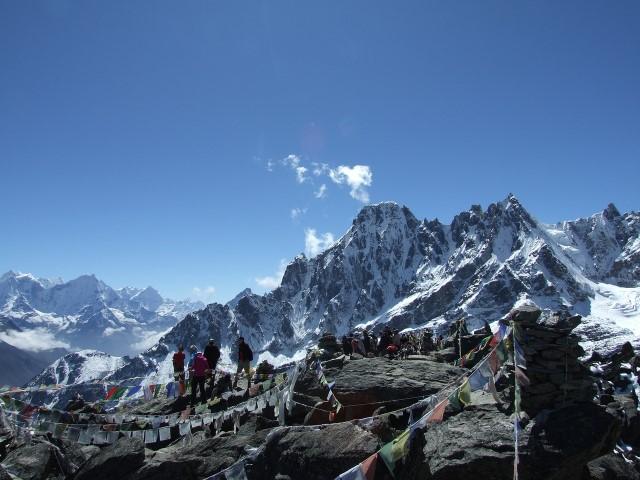
Completing a Himalayan trek instills a deep sense of accomplishment and pride. Standing at the summit or reaching the base camp of iconic peaks like Everest or Annapurna feels like a monumental achievement. The journey becomes a symbol of the challenges you conquered and the barriers you broke down.
Moreover, trekking in the Himalayas provides a unique opportunity for self-reflection and introspection. The solitude of the mountains allows you to contemplate your life, goals, and values, leading to personal insights and growth. The experience often sparks a greater appreciation for life’s simplicity, gratitude for nature’s wonders, and a renewed sense of purpose.
In essence, trekking in the Himalayas is not only about reaching a destination; it’s a transformative journey that leaves you with a deep sense of personal growth, empowerment, and accomplishment that extends far beyond the trek itself.
Final Thoughts
In conclusion, trekking in the Himalayas is an unparalleled adventure that offers a magical blend of challenges, rewards, and personal growth. The breathtaking landscapes, diverse cultures, and profound connections with nature make it an unforgettable experience. Whether you choose the iconic trails like Everest Base Camp or opt for lesser-known routes like Gokyo Lakes or Langtang Valley, each trek offers its own unique allure and moments of inspiration.
Embrace the physical and mental challenges, for they lead to remarkable accomplishments and a deeper understanding of yourself. As you immerse yourself in the grandeur of the mountains and the warmth of local communities, you’ll gain cherished memories and valuable life lessons.

Trekking in the Himalayas is not just about conquering summits; it’s about the journey within, the connection to nature, and the transformation that occurs along the way. So, pack your bags, lace up your boots, and embark on this extraordinary adventure of a lifetime. The Himalayas await, ready to unveil their wonders and bestow upon you an experience that will forever hold a special place in your heart.
FAQs:
What is the best time to trek in the Himalayas?
The best time to trek in the Himalayas is during the pre-monsoon (spring) and post-monsoon (autumn) seasons. In the spring (March to May), the weather is mild, and the valleys come alive with blooming flowers and lush vegetation. The post-monsoon season (September to November) offers clear skies, excellent visibility of the majestic peaks, and stable weather conditions. These seasons provide the most favorable trekking conditions with moderate temperatures, making it ideal for a comfortable and enjoyable experience.
Do I need prior trekking experience?
While prior trekking experience is beneficial, it is not always necessary for all Himalayan treks. There are various routes suitable for both beginners and seasoned trekkers. If you are physically fit, have a positive attitude, and are willing to embrace the challenges, you can undertake some of the more accessible treks with proper preparation. For more challenging and remote treks, it is recommended to have some level of trekking experience and physical fitness to navigate the rugged terrains and higher altitudes safely.
What are some common wildlife encounters?
The Himalayas are home to a rich variety of wildlife, and trekking in this region offers opportunities to spot some remarkable species. Common wildlife encounters include Himalayan thars, yaks, musk deer, and various species of birds like the Himalayan Monal, Danphe, and Pheasants. In certain areas, you may even catch glimpses of elusive animals like the red panda and snow leopard, although spotting these creatures requires luck and patience. Remember to maintain a respectful distance from the wildlife and avoid disrupting their natural behavior.

